What if we need to count some big amounts and we do not have access to a computer or even a hand held calculator? Maybe we could use a pile of brightly colored stones and every time we need to increase our count by one we can move a stone from one pile to another. At the end of the day we can total up our numbers by counting all of the stones in the second pile.

The pile of stones can work but if we need to talley up a very large amount it may be a lot of work to keep the stones counted. We may also make mistakes. What we need is a way to organize our counting stones. We can take a board and make little pockets in it to hold the stones. The pockets need to be a little larger than a couple of the stones and arranged in a way that we can place meaning on the position of the pockets. Something like this mancala board is perfect.
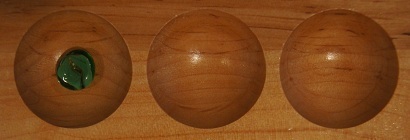
A stone in the first pocket equals one. If we add one more stone we now have two stones in the first pocket which could equal two.
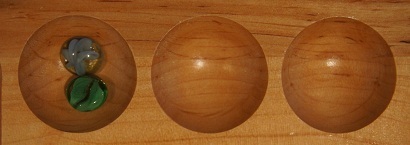
Two stones in one pocket seems a little crowded and if we keep piling our stones up we may end up with the same problem of doing a total count at the end of the day as before we were using our mancala board. Let's keep things simple and pick up our two stones, toss one aside and move the remaining stone into the next pocket.
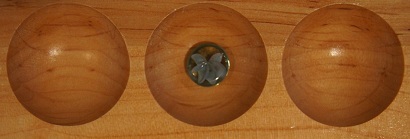
Now we are using the power of place value. If we add every new stone to the first pocket and simply use our toss one and move one to the right strategy every time a pocket has more than one stone in it we have created a base two counting system. Our first pocket represents 1 x 1, the second pocket 1 X 2, the third 1 X 4, the fourth 1 X 8 and so on.
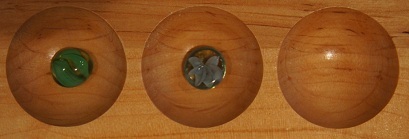
Do you see why these two stones represents a value of 3? The first stone in the first pocket has a value of 1 and the second stone in the second pocket has a value of 2. If we add them together, 1 + 2, we get a total value of 3. What happens if we add 1?
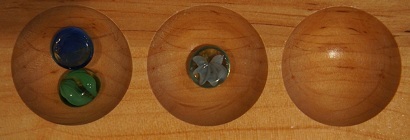
This gives us an extra stone in the first pocket so we toss one and move one to the right.
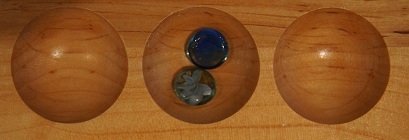
Now we have two stones in the second pocket so we apply toss and move again.
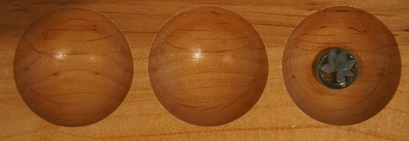
Now we have one stone in the third pocket which has a value of 4. This is correct. Adding 1 to 3 gives us 4.
Once we have learned to count with our base two board it is an easy leap to learn to add. Since our mancala board has two rows of pockets we can use them both for adding. If we put one number in each row we can add them together by simply sliding the stones in one row to the opposite row. Here we have 5 in the top row and two in the bottom row. Make sure you understand why this is so before moving on to adding them together.
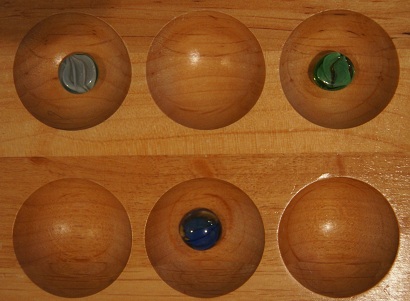
Now to add 5 and 2 we simply slide the stones in the top row to the bottom row.
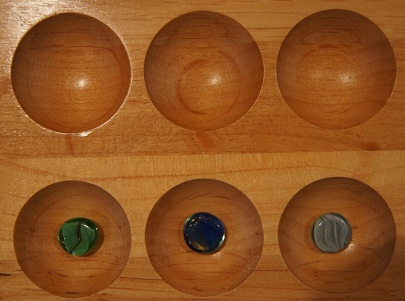
In the bottom row we have 1 + 2 + 4 which is 7, the anwer to our addition problem 5 + 2. When we do our addition slide we just need to apply our toss and move to the right strategy when we get two stones in a pocket.
For fun here is a JavaScript mancal board. Try adding some numbers and watch it move stones. When you think you have the hang of using a base two counting board see if you can answer these questions.
- What is the largest number that can be represented on one row of a standard mancala board with six pockets per row?
- How many pockets would it take to keep track of numbers up to 1000?
- How many pockets would it take to keep track of numbers up to 1,000,000?
- How is counting and adding on the mancala board similar to using an abacus?